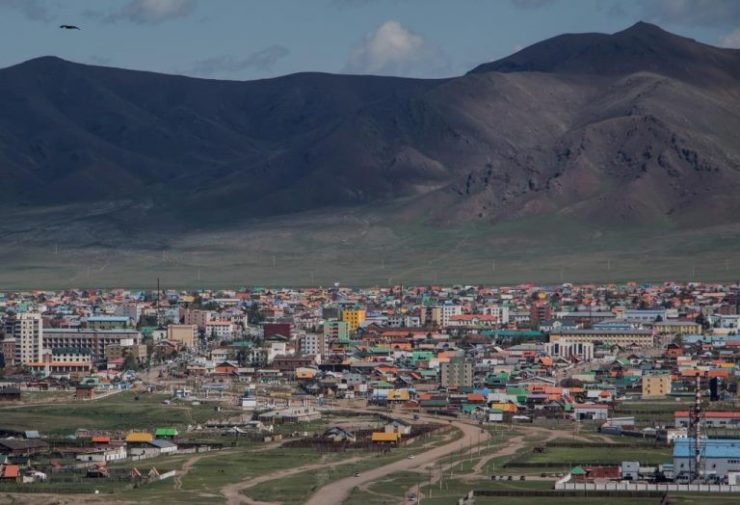
For people all over the world, a new year means a new beginning, a time for new emotions, meetings, acquaintances and discoveries. The same can be said about countries — national governments rarely hesitate to use the onset of a new calendar year as an occasion to promote an agenda which they see as in their country’s interests.
Mongolia is no exception — its government has named 2024 the Year of Regional Development, a clear witness to Mongolia’s urgent need to combat the misguided urbanization of the capital city, a process whose downside is a slowdown in the development of Mongolia’s regions. The decision was announced in a regular meeting of the government on December 27, 2023.
It is worth noting that the problem of regional development has been of concern to the national authorities since 2001, when the Concept for the Development of Mongolia’s Regions was first adopted. Nevertheless, 2024 will be the Year of Regional Development. This year was chosen due to a number of circumstances — in particular, the country’s economic success in 2023, which allowed it to allocate record funding for the implementation of government programs in the 2024 budget. Significantly, in 2024 Mongolia expects to complete the bulk of work on the largest current project for the development of its regions — the construction of new thermal power plants in 10 aimag (regional) centers, and also the promotion of its project to reconstruct several “provincial” airports into international airports. In addition, an unprecedentedly large amount of work on transport infrastructure construction — up to 1,100 kilometers of new roads — is planned for 2024.
Continuing with the topic of regional development, in a government meeting at the beginning of 2024 it was announced that the government supports the resolution On the Relocation of State Institutions to the Regions, already approved by the national Parliament. In the same meeting the government announced the launch of its program to implement 75 projects stipulated in a number of Mongolian policy documents, including its Long-Term Vision-2050, its Program for 2020-2024, and its New Recovery Policy. Most of these projects relate to the development of the country’s regions.
At present, the authorities in Mongolia are actively engaged in drafting specific measures and documents that will provide the legal basis for a new phase of regional development. This work is expected to be completed in the first three months of this year. On January 17, 2024, the country held a Regional Development Forum during which a number of initiatives were put forward, including increasing the number of economic regions in the country from four to six. Participants in the forum also noted that the Concept for the Development of Mongolia’s Regions adopted in 2001 did not reflect the current political, economic and social realities of the country.
Another project forming part of Mongolia’s regional development initiative, and being actively considered and discussed in 2023 -2024 is Karakoum Revival, named after the city that was once the capital of the Mongol Empire. This initiative will involve the construction of a new city with a population of 300,000-500,000 people on the border of Arkhangai and Uvurkhangai aimags, with its own international airport, as well as the construction of a road and railroad linking it with Ulaanbaatar. It is to this new city, named in recent plans as Monkh Khan (in honor of Genghis Khan’s grandson Möngke, who was the Great Khan of the empire during the heyday of Karakorum) that the Mongolian authorities plan to relocate a significant portion of all government bodies. The state has already begun the seizure of land for this project.
At first sight a comparison of the statistics on socio-economic development in Mongolia’s regions with those for the capital shows a steady improvement in the situation in the provinces — for example, the proportion of people living below the poverty line in the provinces area has decreased from about 50 percent to 30 percent over the past ten years. However in the same period that indicator actually increased — from 20% to almost 26% — in the capital city, Ulaanbaatar. However, that downward trend in the capital is due to the fact that many of the poorest population from all regions of the country, in response to a number of social and economic problems in the regions, have migrated to the country’s capital and largest city, which is already suffering from overpopulation. The average speed of traffic on the capital’s roads had decreased from 34 km/h in 2010 to 13 km/h in 2023, and at the present rate traffic in the city will grind to a total standstill by 2040.
Currently, Ulaanbaatar accounts for half of the country’s population, a major proportion of its GDP (65%), and the lion’s share of tax revenues (up to 80%). All this highlights the urgent need to stop the influx of citizens to the overpopulated capital, and one way to do this is to improve the situation in the regions.
Regional development is equally important for the development of a such sectors of the economy as mining, transportation and tourism. All regions of the country — which is 3–4 times the size of the largest European countries — offer rich mineral deposits, potential routes for major national and international highways and attractive tourist attractions. But in order to develop these promising sectors of the national economy it is extremely important to have developed infrastructure and human capital in various regions — not only in the capital. It is likely that, following the implementation of major regional development projects, and thus the improvement of logistics infrastructure in regions with significant economical potential, foreign investors will show an increased interest in mining, agriculture, tourism and energy projects.
Boris Kushkhov, Department of Korea and Mongolia, Institute of Oriental Studies of the Russian Academy of Sciences, exclusively for the online magazine “New Eastern Outlook”